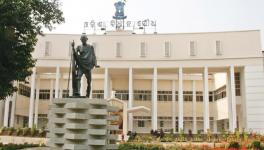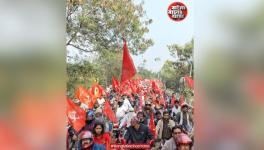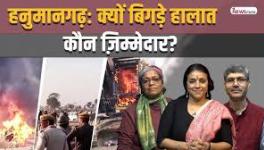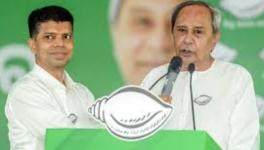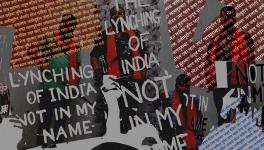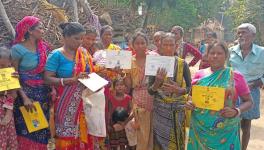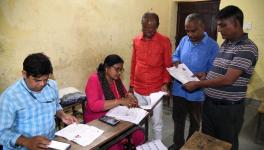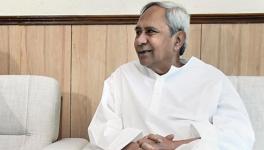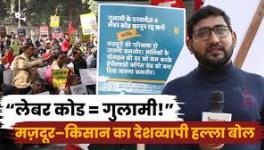Women’s Participation in Bihar Politics: A Long Way to go!
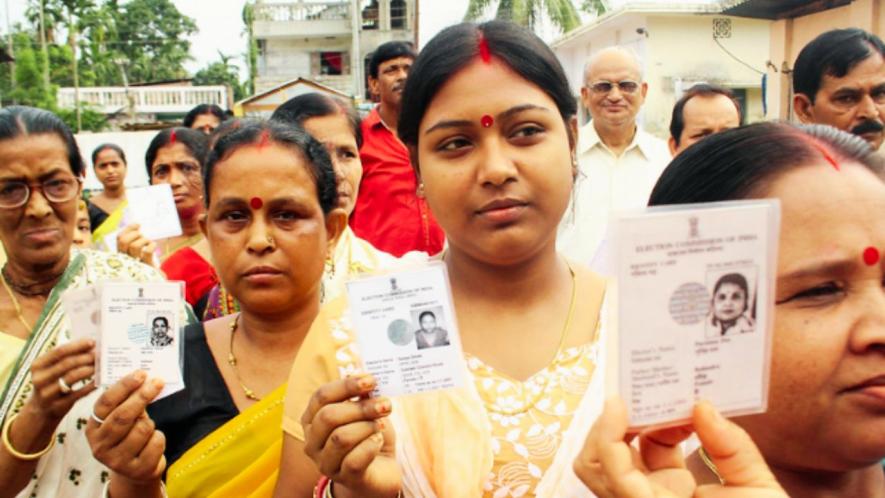
Representational Image. Image Courtesy: Flickr
On political platforms, politicians always talk about women's empowerment and make new promises. From the Central to state governments, numerous schemes and announcements are made to give women an equal place in society and provide them with security. But the reality is that even today, in many districts of India, the lives of most women remain confined to the four walls of their homes.
Despite so many schemes and plans, women's participation in politics in Bihar is very low, although the government has given 50% reservation to women in panchayat elections and 35% in government jobs. Yet, women's participation in politics appears quite low.
According to an article by social worker Narendra Kumar in 2021, Bihar is the first state where 50% reservation was given to women in panchayats and urban bodies. Due to the reservation, women's participation in decision-making in political work has increased. At present, out of a total of 8,442 mukhiyas (village heads) in the state, 5,000 are women. Whether it is the district council or the municipal corporation, the presence of women is now starting to be seen everywhere slowly.
In this background, the festival of democracy is taking place once again in Bihar. In the first phase of the Bihar Assembly elections, voting took place on November 6, for 121 Assembly seats across 18 districts. A total of 1,314 candidates were in the fray. The second phase of polling, covering 122 seats, will be held on November 11, while the counting of votes is scheduled for November 14.
All political parties have made big promises in this election, with a significant focus on women voters. Rashtriya Janata Dal’s Tejashwi Yadav, while promising to launch the “Mai Bahin Yojana” if the Mahagathbandhan forms the government, has announced a one-time grant of ₹30,000 for women. He has also promised to post government employees closer to their home districts and to provide free electricity to farmers. In addition, he has pledged to grant cooperative societies (PACS) the status of public representatives and to raise the minimum support price (MSP) for crops to strengthen the rural economy.
The ruling National Democratic Alliance (NDA), on the other hand, is also making special efforts to attract women voters. On September 26, the Nitish Kumar government launched the Mukhyamantri Mahila Rozgar Yojana. On the same day, in the presence of Prime Minister Narendra Modi, ₹10,000 each was transferred to the bank accounts of 75 lakh Jeevika Didis. On October 3, another 25 lakh women received ₹10,000 each under the same initiative.
In this election, two major alliances are face-to-face for power. On one side is the NDA, which is currently in power and whose leader is Chief Minister Nitish Kumar. Nitish Kumar is seated on the post of Chief Minister for the ninth consecutive time. The NDA includes Janata Dal (United), Bharatiya Janata Party, Lok Janshakti Party (Ram Vilas), Hindustani Awam Morcha, and Rashtriya Lok Morcha. The leader of JD-U is Nitish Kumar, the BJP is being led by Samrat Chaudhary, while the command of LJP (RV) is in the hands of Chirag Paswan, who is also a minister in the Central government at the moment. The chief of HAM is Jitan Ram Manjhi, and the RLM is led by Upender Kushwaha.
On the other side, is the Mahagathbandhan, which will enter the election field as the main Opposition alliance. It includes RJD, Indian National Congress, Communist Party of India (MLL), Vikassheel Insaan Party, Communist Party of India, Communist Party of India (Marxist), Indian Inclusive Party, and Janshakti Dal (Janata Dal). The reins of the Mahagathbandhan are being handled by RJD leader Tejashwi Yadav, while from Congress, Rajesh Kumar, from CPI (MLL) Mahboob Alam, from VIP Mukesh Sahani, from CPI Ram Naresh Pandey, from CPI (M) Ajay Kumar, from Indian Inclusive Party Engineer I.P. Gupta, and from Janshakti Dal (Janata Dal) Shyam Kishor Chaudhary are active on the election front.
The eyes of all political parties are also on women voters. The reason for this is that from 2000 to 2020, not only has the number of women voters in Bihar increased continuously, but their voting percentage has also been rising. In the 2000 elections, compared with 70.71% male voters, female voting was 53.28%.
In the elections held five years later, male voting was 49.95%, while female voting was 42.52%. But in the 2010 elections, women voted more than men at 54.49%, while men's voting was 51.12%. In 2015 and 2020 as well, women remained ahead of men in terms of voting percentage.
One reason why women vote more is because a large number of men from Bihar go outside the state to earn, some to Gujarat, some to Delhi, and a large population also works in the Gulf. The last data on migration came from the 2011 Census, which revealed that about 74 lakh people had migrated from Bihar to other places in India. This figure is the highest after Uttar Pradesh, from where 1.23 crore people migrated.
According to N K Singh, former chairman of the 15th Finance Commission, in 2023, about 73,000 workers went abroad. About 7.2% of Bihar's population lives in other states. More than half the families here depend on income earned from elsewhere.
The report of the study project 'Causes and Consequences of Migration from the Middle Ganga Plain' sponsored by IIPS (International Instotute of Population Sciences) was jointly released by IIPS director KS James and the state's education minister Krishnanandan Prasad Verma.
The survey included 36 villages and 2,270 families, which shows that migration from this area is done by men, without families. The traditional migration areas of Saran, Munger, Darbhanga, Kosi, Tirhut, and Purnia have the highest migration. Seasonal migration is highest in Kosi, Tirhut, and Purnia divisions. Migration is highest from other caste groups, followed by Other Backward Classes or OBCs, the Scheduled Castes and Scheduled Tribes.
In the 2010 Assembly elections, 14% women won elections and reached the Assembly. In the 2010 Assembly elections, there was a 6% jump in the number of women winning elections. In the 2005 Assembly, only 8% women had won elections.
In the 2010 Bihar Assembly elections, a total of 32 women emerged victorious.
But in 2010, there was a 6% increase. Since then, the figure of women's victories has been decreasing in every election. According to an analysis done by the Association for Democratic Reforms (ADR), which closely monitors Indian politics and election processes, in the 2010 Assembly elections, out of a total of 3,293 candidates, 214 (6%) women entered the election field. In this election, a total of 32 (14%) women won elections and reached the Assembly.
After this, in the 2015 Assembly elections, out of a total of 3,406 candidates, 272 (8%) women entered the election field. In this election, only 28 (12%) women won elections and reached the Assembly.
In the 2015 Bihar Assembly elections, a total of 28 women were victorious. Most of the seats were won by women candidates from RJD, JD(U) and BJP.
Among these 28 victorious women, many became MLAs for the first time. This election proved to be an important milestone in terms of women's political participation.
Compared with the previous election, women's participation in the Assembly decreased by 2%. Similarly, in the 2020 Assembly elections, out of a total of 3,720 candidates, 337 (9%) women contested. But only 26 (11%) women could win elections.
Although women's participation in the Bihar Assembly is decreasing, women are now surpassing men in strengthening democracy. According to the data of the Election Commission of India, in the 2020 Assembly elections, on 166 seats in Bihar, women voted more than men.
In the 2020 Bihar Assembly elections, a total of 26 women were victorious. These victorious candidates represented various parties, which include RJD, BJP, JD(U), Congress, Hindustani Awam Morcha, and Vikassheel Insaan Party.
This time, in the 2025 Bihar Assembly election, from the NDA’s side, a total of 34 women candidates are in the fray, while from the Mahagathbandhan’s side, tickets have been given to 30 women. The party that has goven the most tickets to women is RJD. That is, both parties have given women participation of less than 13%.
In the Bihar Assembly elections, the JD-U has a total of 13 women candidates. Its ally, the BJP has also given tickets to 13 women.
HAM, the party of former Chief Minister and current Central minister Jitan Ram Manjhi has been allotted six seats by the alliance, out of which women have been made candidates on two seats. One is Manjhi's daughter-in-law, while the other is his samdhan (in-law).
The Congress, the second largest party of the Mahagathbandhan, has given tickets to only five women. VIP has fielded candidates on a total of 14 seats, out of which there is only one woman.
Meanwhile, Prashant Kishor's party Jan Suraaj Party has fielded candidates on all 243 seats, which include 25 women. Kishor had earlier claimed that he would give 40% tickets to women.
The Bahujan Samaj Party (BSP), which succeeded in winning one seat last time, is ahead this time by giving tickets to 26 women in Bihar.
Many women have emerged from Bihar politics and made their mark at the national level. They have left a significant impact not only on Bihar but also on national politics. Let's take a look at some of these influential women leaders.
Rabri Devi, the wife of RJD chief Lalu Prasad, was sworn in as Bihar's first female Chief Minister on July 25, 1997.
Renu Devi served as the Minister of Animal and Fisheries Resources in the previous Bihar government led by Nitish Kumar. She also served as Deputy Chief Minister of Bihar from November 16, 2020, to August 9, 2022.
Meira Kumar, daughter of Babu Jagjivan Ram, a renowned freedom fighter and former Deputy Prime Minister, is a seasoned politician and prominent leader of the Congress party.
In the current era, most political parties and leaders see women only as a vote bank, not as part of leadership. Political parties should ensure at least 33% reservation for women in ticket distribution so that they can be included in the real decision-making process. The government should also run programmes to inspire girls to enter politics in schools, colleges, universities, and neighborhoods.
Although "women wings" exist in most political parties, male-dominated thinking still prevails. Separate budgets and funds should be allocated for women so that they can become economically independent and actively participate in politics freely.
Besides this, the trend should also end where women become MPs or MLAs, but are used only as token representatives, and the real politics is done by the men of their houses. True women's empowerment will be possible only when women not only sit on positions but also participate equally in the mainstream of policy and decision-making.
Sahil Razvi is a freelance journalist and alumnus of Jamia Millia Islamia. He writes on politics, Sufism, and history. Afroz Khan is a teacher who writes on women, politics, communal harmony, and Islam. She holds a Master’s in Education. The views are personal.
Get the latest reports & analysis with people's perspective on Protests, movements & deep analytical videos, discussions of the current affairs in your Telegram app. Subscribe to NewsClick's Telegram channel & get Real-Time updates on stories, as they get published on our website.









